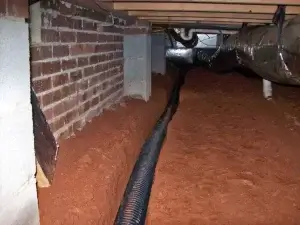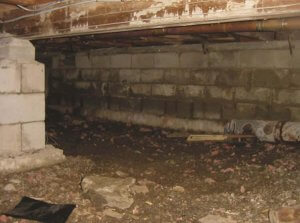The Don’ts of Crawl Space Encapsulation You Should Know
January 11th, 2023
Does your house have a crawl space system? If so, you might be using it for different purposes such as installing your HVAC system, gas lines, plumbing, electricals, and more. All these systems are crucial for a comfortable stay in your house. However, these systems also demand no moisture. But it is a known fact that crawl space systems are prone to moisture issues from the foundation. To prevent crawl space moisture, you need to get crawl space encapsulation services from a reputable company. Crawl space encapsulation will help you create a thick moisture barrier. To get crawl space encapsulation, you will be spending a few hundred dollars. Hence, make sure you know the don’ts of crawl space encapsulation.
Don’t forget to install a water drainage system
You might think crawl space encapsulation will prevent the entry of water into your crawl space system. However, encapsulation prevents only moisture. Hence, you need to install a water drainage system before you start crawl space encapsulation. This will ensure the water is drained away from the house foundation and prevent its entry into your crawl space system.
Don’t encapsulate without sealing the outside space
Encapsulation will keep your crawl space system dry. However, if there are large gaps, damp air can enter through these gaps causing moisture in the crawl space. Hence, it is important to seal these gaps from the outside. This way the air will not enter the crawl space after encapsulation and make sure the dehumidifier works effectively.
Don’t use fibreglass
For crawl space encapsulation, don’t use fibreglass as an insulation material. Fibreglass is known to absorb moisture, get heavy, and lose the R-value. It can also cause sagging in the insulation material defeating the purpose of encapsulation. Moreover, the combination of fibreglass, moisture, and adhesive creates a breeding ground for mould and mildew. So, all in all, fibreglass is a bad choice of material for encapsulation.
Don’t use the DIY approach for encapsulation
Encapsulation is a complicated task. Hence, you shouldn’t use a DIY approach for it. Instead, you should call a professional company for the same. They can also provide additional services such as foundation waterproofing along with encapsulation. If you are in search of a professional company to get crawl space encapsulation services, you can get in touch with us at Ontario Wet Basement Solution Inc. We provide certified crawl space encapsulation along with wet basement waterproofing, foundation waterproofing, foundation crack repair, and more.
Contact us now to know more.


